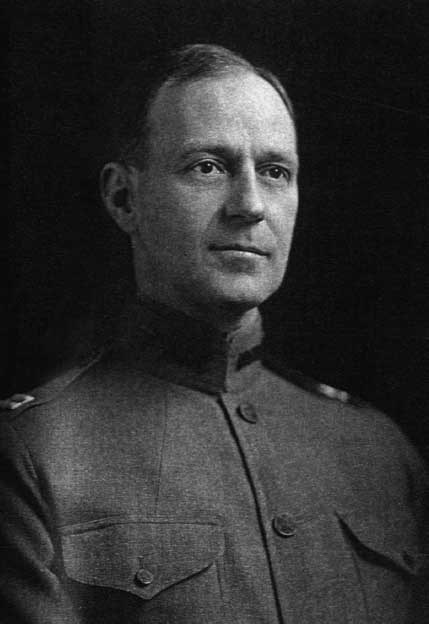The assassination of Archduke Franz Ferdinand of Austria on June 28, 1914, helped to trigger the start of World War I, and within weeks, the Allies (the U.K., the Russian Empire, and the French Third Republic) were at war with the Central Powers (Germany and Austria-Hungary). The Allies were later joined by Italy, Japan, and the U.S., whereas the Ottoman Empire and Bulgaria joined the Central Powers.
To defeat the enemy, the Allies and the Central Powers used trench warfare to create strong defensive positions that were hard to breach. Frequently, these trenches were constructed in three interconnected rows, which enabled the combatants to retreat and continue fighting to maintain their positions. Tens of thousands of miles of trenches were quickly built from the Belgian coast to the border of Switzerland. Reliable, rapid-fire machine guns became widely used and forced troops to seek protection in the trenches. Barbed wire was used extensively to inhibit movement on the ground between trenches, and tanks were used for the first time in 1916. Later in the war, poison gases and flamethrowers were introduced to kill and debilitate enemy troops.
When World War I began in 1914, the combatants wore only cloth hats as part of their uniforms. Soldiers had worn body armor in the past, but it became less effective after the long rifle was invented, so this early form of body armor was eventually abandoned. Because trench warfare exposed the head and neck area to gunfire and artillery assaults, many soldiers died as the result of penetrating intracranial injuries. In 1916 the British, and then the German and French, adopted widespread use of steel helmets. Although the number of fatal cranial injuries was reduced after the introduction of helmets, soldiers now survived with more devastating facial injuries.
Plastic and reconstructive surgery’s evolution
Sir Harold Delf Gillies, MD, FRCS, was a talented surgeon born in 1882 in New Zealand and received his medical degree at Cambridge University in the U.K. He then trained as an otolaryngologist and developed an interest in facial reconstruction, so he traveled to France to study with Charles Valadier, a French-American dentist, and Hippolyte Morestin, MD, a plastic surgeon skilled in facial reconstruction techniques. While serving in the British military, Dr. Gillies worked to establish a specialized facial reconstructive unit, which evolved into Queen’s Hospital, located just outside London. More than 5,000 patients received reconstructive procedures there primarily to rehabilitate facial injuries.
John Staige Davis, MD, FACS, was born in 1872 in Norfolk, VA, and received his medical degree in 1899 from the Johns Hopkins University School of Medicine, Baltimore, MD. Dr. Davis was the first U.S. surgeon to devote his career to the study and advancement of plastic and reconstructive surgery.
In 1917, the U.S. entered World War I and established treatment units at the specially constructed Fort McHenry U.S. Army General Hospital No. 2 in Baltimore to care for injured servicemen. More than 20,000 wounded soldiers were treated in this 3,000-bed receiving hospital from 1917 to 1923, when it was closed. In 1919, just one year before Dr. Gillies published Plastic Surgery of the Face, Dr. Davis published Plastic Surgery: Its Principles and Practice.
Conclusion
The texts by Drs. Gillies and Davis on plastic and reconstructive surgery formed the foundation for the surgical specialty both in the U.S. and in the world. Dr. Davis was an early member in the American Association of Plastic Surgeons (AAPS), which was founded in 1921. He served as the president of the AAPS in 1944. Dr. Davis eventually established the American Board of Plastic Surgery (ABPS) and served as its first chairman. The ABPS established the specialty, which became one of the 24 specialty boards now recognized by the American Board of Medical Specialties (ABMS), which maintains the standards for physician certification. In 1946, Dr. Davis was elected to serve as a Regent of the American College of Surgeons. Both the College and the ABMS focus on improving the quality of health care for patients, families, and communities through continuous professional development.
Acknowledgments
The authors gratefully acknowledge the assistance of Meghan P. Kennedy, ACS Archivist, and Michael Beesley, Assistant Archivist, Division of Member Services.
Bibliography
Davis JS. Plastic Surgery: Its Principles and Practice. Blakiston and Co., Philadelphia, 1919.
Davis WB. The life of John Staige Davis, M.D. Plast Reconstr Surg. 1978;62(3):368-378.
Gillies HD. Plastic Surgery of the Face. Hodder and Stoughton, London, 1920.
Morgan RF. The Fort McHenry General Hospital for plastic and maxillofacial surgery. Plast Reconstr Surg. 1983;72(2):255-259.
Sargent LA, Morgan RF, Davis WB. John Staige Davis: Pioneer American plastic surgeon. Clin Plast Surg. 1983;10(4):653-656.


